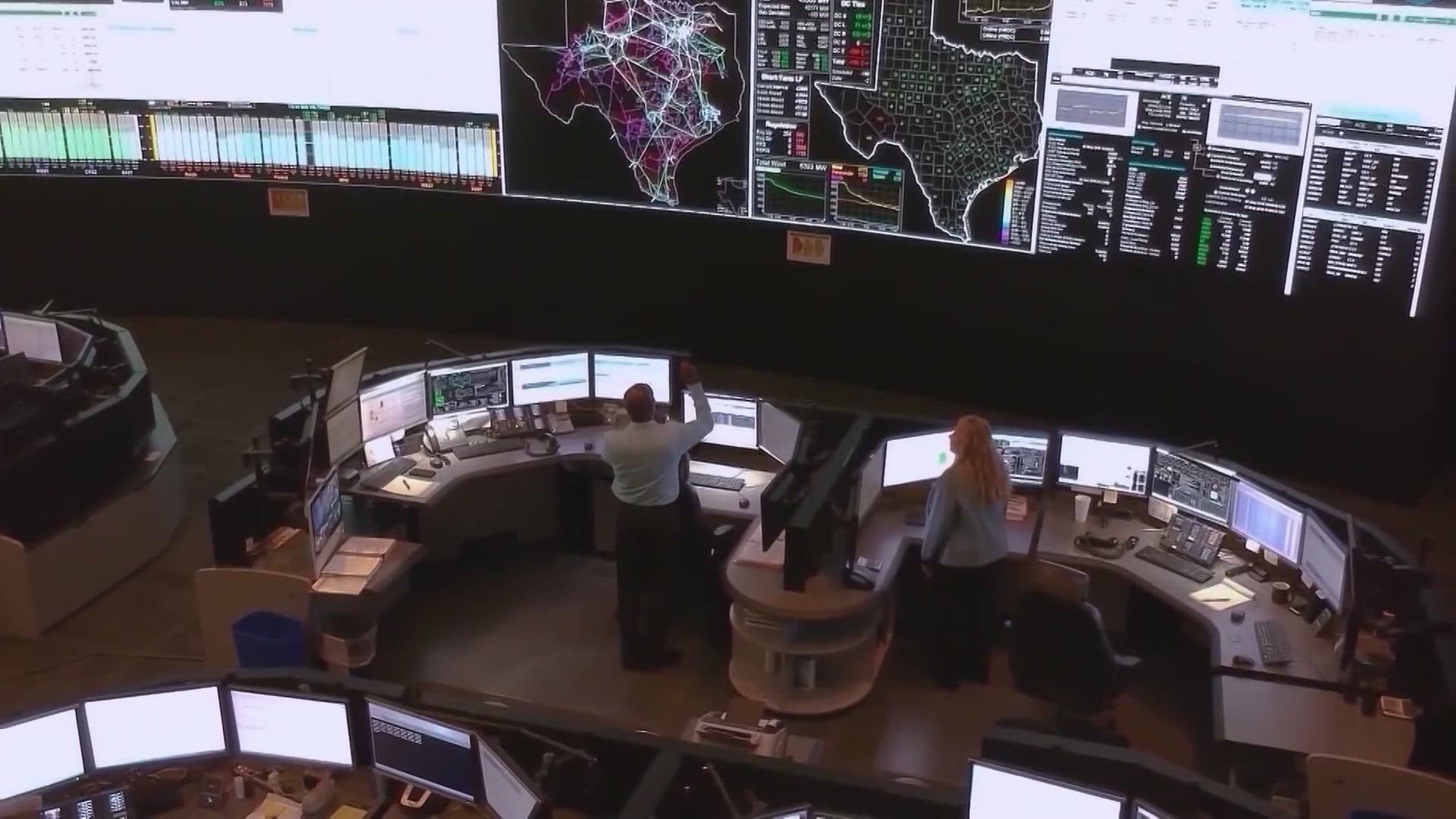SAN ANTONIO — An ERCOT grid readiness report for January shows the power grid has a 16.77 percent chance of going into emergency conditions if we get another winter storm this January.
That could mean rolling blackouts, though the blacks would be short lived.
Their report states the "Chance of Ordering Controlled Outages" would only be that high between 8 a.m. and 9 a.m. and only during another storm similar to Winter Storm Elliot. Even in those conditions, the chance of outages would be reduced to 4.93 percent after 9 a.m.
The time frame in question is a typical weak point for the grid during the winter months. Wind turbine power production dies down around 8 a.m., but solar panels don't start feeding into the grid until later in the morning. As the day continues, that solar power mitigates any continuing issues with the grid.
Texas still gets most of its dependable power from natural gas and coal plants, and ERCOT would prefer to have enough of those plants to handle the state's needs at all times in case of an emergency. Unfortunately, current projections show available power from gas coal is only barely enough to meet the maximum forecasted power demands during normal grid conditions. It's an issue both ERCOT and state leaders are both aware of.
"We have a potential problem this winter because the (power) market has not provided the level of dispatchable resources that Texas needs," ERCOT Board Vice Chair Bill Flores said during a meeting last month.
ERCOT put out requests for companies to increase power on the grid in early October and had hoped companies could restart old power plants to help meet the projected energy demand during winter. Unfortunately, they didn't have many takers.
ERCOT wanted an additional 3,000 MW of energy for the 2023-2024 "peak load season." By November 17, they could only find an additional 11 MW and canceled the request. ERCOT President and CEO Pablo Vegas stated the following when ERCOT canceled the request for additional energy:
“The request for additional capacity was an extra layer of precaution to mitigate higher risk during extreme weather this winter. . . ERCOT is not projecting emergency conditions this winter and expects to have adequate resources to meet demand.”
Vegas made this statement despite ERCOT's grid readiness report still containing the 16.77 percent chance of outages during a winter storm and despite the earlier statement from Flores.
University of Houston Energy Fellow ED Hirs told KENS 5 the appeal for more power was already a long-shot because power plant owners were not interested in restarting old, decommissioned plants just a few months ahead of winter.
"The plan was way too little, way too late," Hirs said. "Just simply throwing some money out and hoping that people could bring a coal-fire power plant back out to operational capability within a period of weeks was really, ridiculously, ambitious."
Hirs also pointed out that any power plant owners who already had plants on the Texas grid would make a lot more money if they didn't bring additional power plants online. Power plants make more dollars per Megawatt when power is in short supply and ERCOT raises prices. Hirs said spending money on old power plants to avoid a supply shortage is simply not on the best interest of those companies.
"The incentive is to drive the prices up," Hirs said.
This leaves ERCOT hoping that the weatherization efforts over the last year will still be enough to keep natural gas and coal plants running. Winter storms could still have an effect on those plants and could still knock out wind and solar power instillations as well.
"A cold front with freezing precipitation takes the wind farms out of play. Freezing precipitation and clouds takes the solar farms out of play," Hirs said. "We do need more power plants and ERCOT can't have them built."
Texas voters did just approve a new plan by the Texas Legislature to create a $10 billion fund to help finance new power plants, ERCOT couldn't say if plans for new power plants are in the works just yet.

